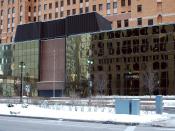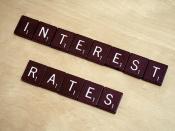The Savings and Loan Crisis refers to a series of failing savings and loan institutions (S&Ls) in the late 1980s. The failure of hundreds of S&Ls in 1988 hurt investors and caused the U.S. government to bail out the industry with public funds. A policy set by the federal government before 1980 was one of the root causes of the Savings and Loan Crisis--federal deposit insurance. It was an unsound policy because it charged all S&Ls the same premium (interest rate) and overlooked their individual risks. It was the equivalent of charging everyone the same interest rate regardless of their individual credit worthiness. Another contributing factor to the failures--borrowing short to lend long--was a federal policy forced on S&Ls after the Great Depression. S&Ls used short-term passbook savings to fund long-term, fixed-rate home mortgages. This "Regulation Q" did not allow the supply and demand of the market to work properly--it limited interest rates banks could pay on their deposits.
The extension of Regulation Q to S&Ls allowed the mismatching of interest costs to earnings to continue, resulting in disaster. Other policies set by the federal government before 1980 that led to the Savings and Loan Crisis included interest rate restrictions, a federal ban on adjustable rate mortgages, restrictions on setting up branches, the dual chartering system, and the secondary mortgage market agencies. A decision made in October, 1979, restricted the growth of the money supply, thus causing interest rates to soar. Between June, 1979, and March, 1980, short-term interest rates rose by over 6 percentage points, from 9.06% to 15.2%. In 1981 and 1982 the S&L industry reported almost $9 billion in losses. In mid-1982, all S&Ls combined had a negative net worth, valuing their mortgages on a market-value basis of $100 billion. The specific policy failures during...


